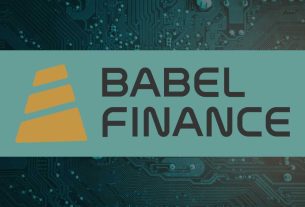Across emerging markets, millions of informal workers are joining gig work platforms in sectors like ride-hailing, deliveries, and home, personal, and office services. Workers joining platforms in emerging markets are stepping into digitized, formal work, but most of them remain largely financially excluded. On platforms, they connect to a digital interface to seek work, get paid into digital accounts, and generate reams of data on the quantity, regularity, and quality of their work. The digital connection and the data generated open new pathways for their financial inclusion.
By partnering with such gig platforms, fintechs and financial service providers (FSPs) secure direct access to large groups of difficult-to-reach customers onboarded to digital financial accounts with reliable earnings data. For platforms, financial services for workers can increase worker engagement and retention by reducing churn and improving the stability and smooth functioning of the platform ecosystem. Sensing this opportunity, platforms and fintechs have begun offering a variety of credit, savings, and insurance products on platforms to gig workers in many emerging markets.
Over the past two years, CGAP partnered with gig platforms and fintechs to test the effectiveness and value of such financial services for gig workers and to support a learning community around this frontier of innovation. Our experience shows that such services can enable gig workers’ financial inclusion and provide support to their livelihoods by helping them access working capital, manage emergencies, and smooth cash flow. Still, multiple factors inhibit how much financial inclusion platforms can unlock. Funders and the broader financial inclusion community must understand these roadblocks and the state of innovation in the space so they can act and amplify impact. We offer some insights and suggested action items to amplify the potential for this ecosystem to benefit workers.
The lay of the land: current innovation and ensuing roadblocks
We found several innovations bringing financial services to gig workers. For example, digital work data on informal workers who lack credit history can make credit scoring more inclusive, extending access to thin or zero-file workers. CGAP’s pilot with Karmalife, a fintech company in India, found that platform work data may be as good as credit bureau data in predicting the creditworthiness of drivers and that it can materially improve the predictive accuracy of credit models that also use bureau data. Their experience shows that greater earnings, longer working hours, and higher driver ratings are all associated with lower repayment risk.
The digital rails of the platform ecosystem are being used to embed automatic sweeps to help workers save by moving money from workers’ earning wallets into savings accounts. Further, a large workforce engaged by a platform allows insurers to treat workers as a quasi-employee group, thereby better managing their risk and improving tailoring for group insurance products.
Although the opportunity is clear, it has been difficult to scale financial services to gig workers for several reasons:
- Building new products in new types of partnerships (between platforms and fintechs) is difficult. The early stages of product development are expensive, and there are many open questions about market size, profit sharing, and data protection.
- The rules for responsible data sharing are unclear, and platforms are reluctant to relinquish valuable data. Few fintechs have established APIs to facilitate sharing (and even when they do, platforms often lack the tech capabilities to make them work). As a result, very few players have been successful in establishing the validity of platform data to convince credit underwriters and traditional banks to lend to this segment. Lending is possible for basic wage advances but larger loans for education, skill-building, or expansion are missing.
- Designing user experiences that work for this worker segment — about which very little is known — is challenging. As a result, user experiences tend to be disjointed and clunky and adoption is often frustratingly low. Further, product design remains generic and is currently not tailored to the unique needs and aspirations of women gig workers.
Since most emerging markets do not have such a ubiquitous and accessible payments infrastructure, this impacts the business case and the customer experience of such products.
Looking ahead: the outlook on financial inclusion of gig workers
At a recent CGAP convening that brought 50 executives from platforms and fintechs together, there was a strong sense that innovation is moving in the right direction, but levers of change are needed to truly unlock the ecosystem’s value as a channel.
Action items for the financial inclusion community are as follows:
1.) Support platforms and fintechs to experiment new products
Platforms and fintechs need greater experience deploying these products to prove the link between financial services and worker retention. Early experiences have discouraged many, given that purely digital services have not led to significant uptake. The time required to solidify these business models does not always match fast-paced, high-churn platform business models. Funders can create the space, through patient capital, for such experimentation and insight-gathering.
2.) Compel the financial services sector to build comfort with new models
Various actors in the financial sector, including credit underwriters, traditional banks, and authorities, needs to build comfort with new credit scoring and lending models. Funders can support bringing more insight into the public domain on how successful innovators have deployed scoring models, thus building greater comfort.
3.) Support regulatory authorities to streamline the deployment of work data
Regulators may need to intervene to improve the quality of and access to work data, making such data usable and reliable. Eventually, it may be useful to think about work data much like we think about financial data and consolidate it alongside credit bureau data. Doing so would allow workers to assemble their data in reliable, transparent, and coherent ways to unlock their access to new and more robust products. Currently, that information is owned by platforms, each capturing a sliver of earnings and financial data. Funders can convene discussions between regulators and platforms to facilitate these changes.
4.) Support governments in forging responsible connections with platforms
Governments interested in protecting the needs of such workers may find that platforms provide a valuable pathway to reaching them and can make social safety nets and other emergency services more easily available to this group. This opens up the possibility of partnerships between governments and platforms to bring greater support to this segment.
Going forward, we anticipate that digital ways of securing work and getting paid will create more work data from various sources and deepen digital channels. Using that data and those channels to reach excluded segments will require new collaborations and partnerships. Lessons learned from providing financial services to the gig-worker segment may present broader lessons applicable to a variety of other excluded groups such as farm laborers, rural workers, and women, who are increasingly adopting digitally contracted work. Therefore,



